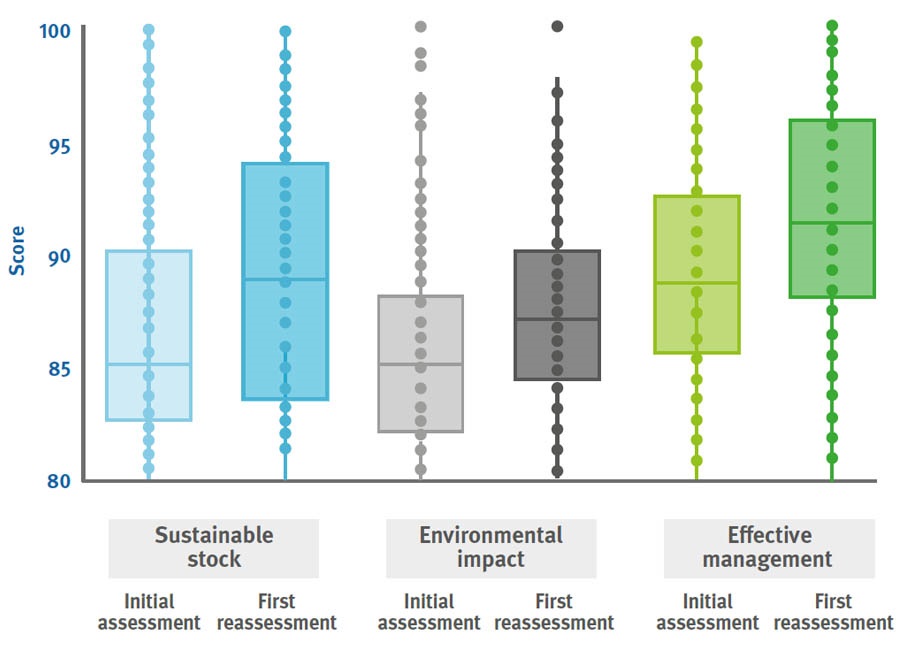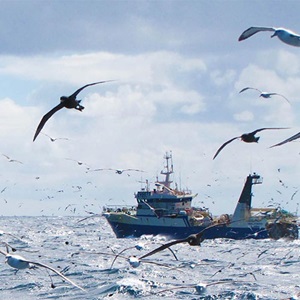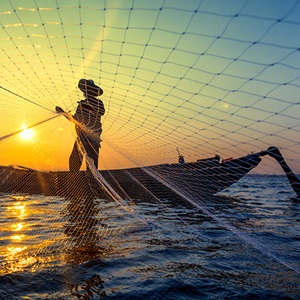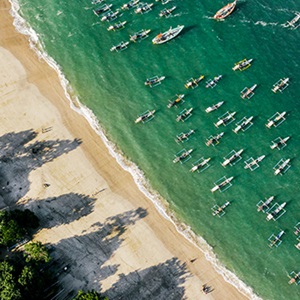Fisheries don’t stop improving once they become MSC certified. They make a long-term commitment to sustainability and to keep up with global best practice.
Why do MSC certified fisheries need improving?
To be certified as sustainable, fisheries must score an average of at least 80 out of 100 for each of the MSC Fisheries Standard’s three principles: sustainable stocks, environmental impacts and effective management.
Fisheries improve significantly as they stay in the program.
The graph below shows the distribution of scores from all currently certified fisheries that have completed at least two full assessments against the MSC Fisheries Standard – typically, this reflects changes over five years. For all three principles there is a statistically significant improvement between the average (median) score when they join the program and at the end of the first certification period.

How does the MSC drive fisheries sustainability?
The three principles of the Fisheries Standard are scored against 25 indicators. If a certified fishery scores less than 80/100 on an individual indicator, it will be set a ‘condition of certification’ by the independent assessor. The fishery must then implement a plan of action to make improvements that will bring it up to global best practice. If conditions are not met within the certification period (usually 5 years), the fishery is suspended from the MSC program.
Over 95% of certified fisheries have successfully completed at least one condition. Conditions drive continual improvement towards global best practice in fisheries sustainability.
What improvements have been made?
Completing one condition can lead to a wide range of improvements. By March 2024, MSC certified fisheries had recorded over 2,362 different improvements.
Sometimes, one action produces multiple improvements. For example, modifying gear types could reduce bycatch of a range of species.
Improvements by MSC certified fisheries over the last three years: 417
146
118
74
79
Case studies
Tuna fishery works to reduce bycatch
How the island nation of Fiji is leading the way in reducing accidental catch in longline tuna fisheries.
Pink shrimp fishery uses LED lights on nets
The Oregon and Washington pink shrimp fishery off the west coast of the USA is working to protect a lesser-known fish.
Squat lobster fishery uses new science
A Chilean squat lobster fishery has been working with researchers to map its fishing grounds.
Collaboration helps secure Barents Sea cod stocks
North East Arctic cod and haddock thrive in the Barents Sea due to good management and international collaboration.
Fishing for the Future Report
The Fishing for the Future Report for Australia is the first of its kind and provides a detailed analysis of the positive environmental impacts made by fisheries that have chosen to be assessed against the MSC Fisheries Standard since 2000.



-500.tmb-thumb300.jpg?Status=Master&Culture=en&sfvrsn=651ac8e5_1)

